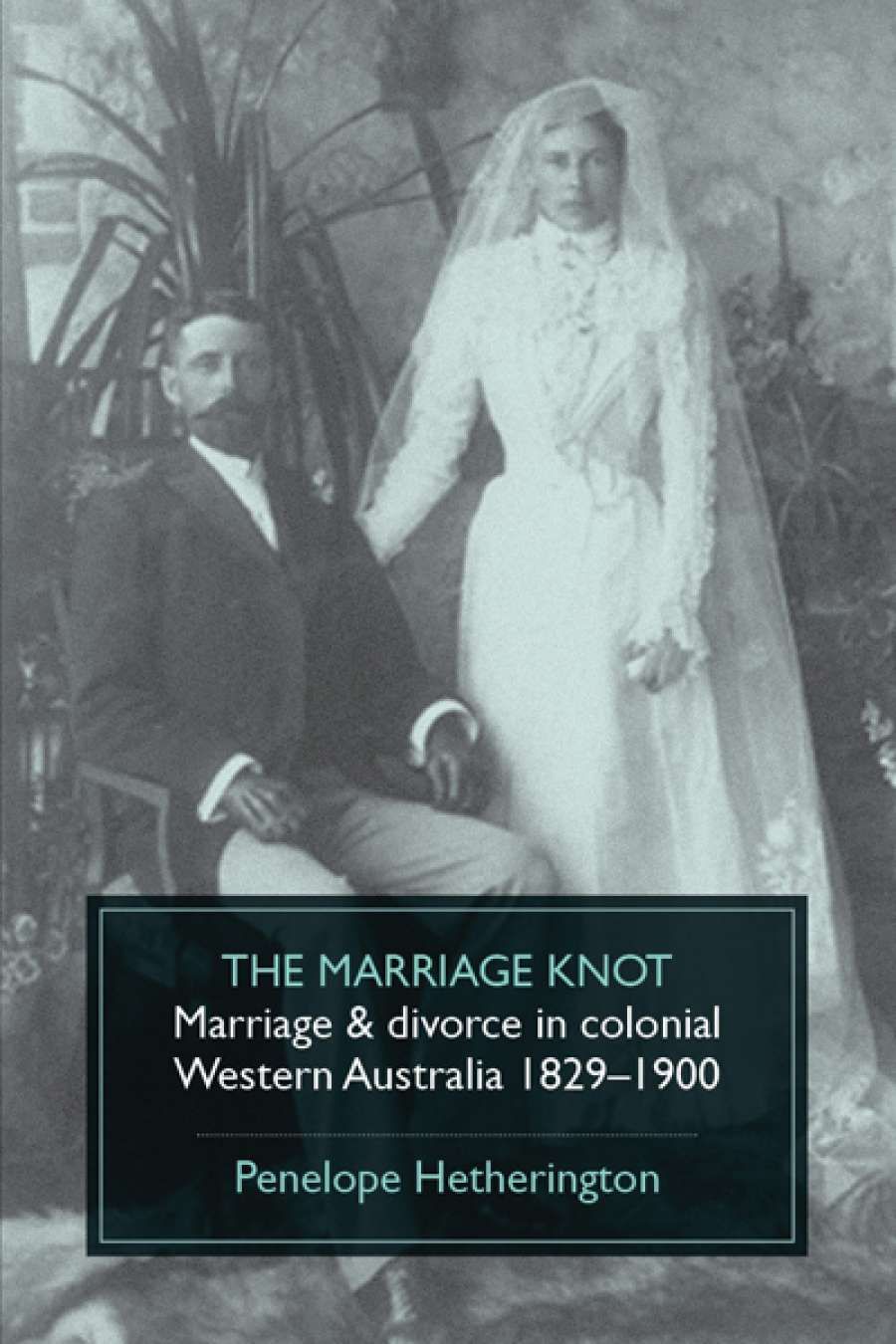
- Free Article: No
- Contents Category: Australian History
- Review Article: Yes
- Article Title: The marriage knot
- Online Only: No
- Custom Highlight Text:
Between European settlement in 1829 and the 1900 federal referendum, the legislation regulating matrimony in the infant Swan River colony changed eight times. Now, in this intelligent dissection of marriage and divorce laws in colonial Western Australia, historian Penelope Hetherington examines the political, religious, and social forces that effected change, redefined gender relations, and led to a gradual recognition of the rights of women.
- Book 1 Title: The Marriage Knot
- Book 1 Subtitle: Marriage and Divorce in Colonial Western Australia
- Book 1 Biblio: UWA Publishing, $24.99 pb, 203 pp, 9781742585215
Until 1841, when Governor Hutt introduced the first local marriage act, couples wishing to tie the knot were obliged to comply with British law. These laws, the preponderance of Anglican members, the special status accorded them by colonial administrators, and the relatively late arrival of Catholic and non-conformist clergy ensured the hegemony of the Church of England in Western Australia. However, subsequent reforms eroded the authority of the Anglican ministry and, paradoxically, exacerbated religious tensions within the small community.
It is also interesting to note the movement towards greater female autonomy, a consequence of the growing number of deserted, and abused, wives and children. Hetherington’s forensic analysis of civil and religious archives, enlivened by sketches of the leading colonial figures, as well as the ordinary men and women struggling to survive in a new and inhospitable land, offers a unique look at life in early Western Australia. More problematic is her readiness to accept the ascendancy at its own valuation while discounting the views of Colonial Secretary Richard Madden, an Irish Catholic, whose ‘unusual perspective’ on the cabal exposes its cultural chauvinism. Bishop Brady, the Catholic prelate, emerges as a ‘troublesome priest’, which no doubt he was in British eyes. Notwithstanding its repetitive narrative, this otherwise lucid social history makes light work of its dense matter.


Comments powered by CComment